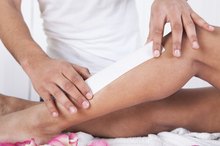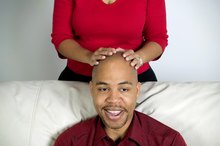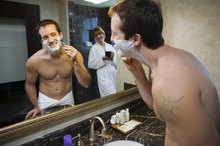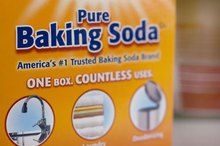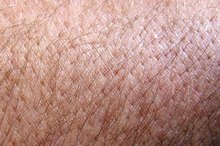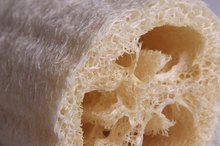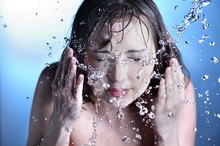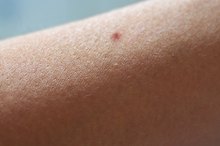How to Prevent Ingrown Hairs in a Moustache
Ingrown hairs usually form after shaving or tweezing, when the hair curls in on itself instead of pushing through the skin 1. The curled hair continues to grow, trapped under the skin and sometimes causing inflammation and infection, until it is removed. Ingrown hairs can be painful and cause acne-like bumps on your skin. An ingrown hair can form anywhere you remove hair by the root. Ingrown hairs can cause bacterial infections, darker skin pigmentation and permanent scarring.
Exfoliate your skin twice a week to slough off dead skin cells. Exfoliating helps remove the top layer of skin, allowing curled hairs to pop through the skin instead of remaining trapped. Rub a textured sponge or washcloth in circles over your face during your shower or morning routine.
How to Remove Perianal Hair
Learn More
Trim mustaches as close as possible with trimmers before shaving the skin close 1. Trying to shave off longer hair pulls the follicles, which leads to irritation.
Shower before shaving in warm water for at least five minutes 1. Soften facial skin and coarse facial hair with warm water to prevent pulling and snagging. Spread a thin layer of moisturizing gel over your upper lip and other areas you plan to shave. Allow the gel to soften hair at least three minutes before shaving 1.
Bumps on the Head After Shaving
Learn More
Shave with the grain, or direction of the mustache growth, to keep the remaining hair from curling inside the skin. Pat your skin dry. Apply an oil-free moisturizer, like aloe vera gel, to soothe skin and prevent further irritation.
Tips
To completely prevent ingrown hairs on your upper lip, keep your mustache. Trimming length outside the follicle won't cause ingrown hairs like removing the entire shaft at the skin level.
Warnings
Never dry shave. Razors pull and snag hairs, nick the skin and irritate follicles, causing razor bumps and burn.
Related Articles
References
- KidsHealth: Shaving
- MedlinePlus. Acne.
- Cleveland Clinic. Ingrown hair. Updated February 28, 2018.
- Merck Manuals. Ingrown beard hairs. Updated October 2019.
- Cleveland Clinic. Ingrown hair: Management and treatment. Updated February 28, 2018.
- Ogunbiyi A. Pseudofolliculitis barbae; current treatment options. Clin Cosmet Investig Dermatol. 2019;12:241-247. doi:10.2147/CCID.S149250
- MedlinePlus. Folliculitis. Updated October 8, 2018.
- Zaenglein AL, Pathy AL, Schlosser BJ, Alikhan A, Baldwin HE, et. al. Guidelines of care for the management of acne vulgaris. Journal of the American Academy of Dermatology. 2016; 74(5): 945-73. doi:10.1016/j.jaad.2015.12.037
Writer Bio
Amanda Herron is a photojournalist and writer whose credits include: "Georgia Realtor Magazine," "Jackson Parent Magazine," "Christian Guitarist and Bassist" and the Associated Press. Herron has a Bachelor of Arts in journalism and a Master of Arts in Education from Union University. She is a member of the NPPA and has awards from the Tennessee Press Association and Baptist Press.
